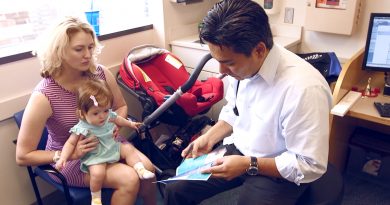Increasing patient engagement in healthcare decision-making
Making decisions is hard. Anyone who has ever struggled to pick a restaurant for dinner knows well – choosing between options is difficult even when the stakes are low and you have full access to information.
But what happens when the information is incomplete or difficult to comprehend? How does navigating a health crisis impact our ability to choose between different treatment options?
The Wall Street Journal published an article about something I have spent considerable time studying: the importance of decision aids in helping patients make difficult medical decisions. They note correctly that simplifying medical jargon and complicated statistics helps patients take more control over their care.
But that is only part of the equation.
In a recent paper, I considered several barriers to patient engagement, including individual patient factors and contextual dynamics. Patient-level factors can include level of education, health literacy, language barriers, and cultural attitudes towards care—especially the attitude that “doctor knows best.” Contextual dynamics focus on the patient encounter, such as lack of time, timing of information delivered to the patient, and clinical flow. Perceived lack of time for engagement is a critical barrier.
A focus group study of 48 patients found that participants frequently described how insufficient time with their physicians hindered their opportunity and ability to ask questions, voice concerns, and seek guidance as they deliberated. One patient said, “I don’t know if the reason why I was so poorly informed was because I don’t ask enough questions or because they don’t give me enough information . . . It seems to me everybody is in a hurry . . . and I begin to feel guilty about taking up their time and . . . after it’s all over I . . . think to myself, why didn’t I ask them more questions?”
After analyzing these barriers, I suggest a few strategies to increase engagement, including asking patients to:
- Indicate the role they want to play
- Repeat what they already know and understand about their condition
- Express their values
- Ask questions
Overcoming these barriers, however, is not solely the obligation of the patient. Healthcare providers have an important role to play in ensuring that patients are making informed decisions about their care. Clinicians should:
- Help patients remember what was discussed
- Provide time and opportunity for the patient to reflect on information
These strategies are not always easy to implement and come with challenges. Factors such as hospital resources and clinician time can prevent their utilization in a clinical setting. Policy incentives, such as billable time for engagement in shared decision making or laws to incentivize shared decision making (some states count documented use of a decision aid as prima facie evidence of valid informed consent) go part way to addressing these obstacles, but it remains to be seen if they are surmountable in today’s healthcare environment.
To this end, continued research is crucial. We’ve examined these factors in the clinical setting with a project centered on decisions about Left Ventricular Assist Devices (LVADs). Our LVAD research, funded by the Patient-Centered Outcomes Research Institute, allowed us to put some of these engagement strategies into practice in developing a decision aid for patients with heart failure.
Navigating the healthcare system difficult – especially in times of illness – but ensuring that patients can give truly informed consent is a worthy goal.
-By Jennifer Blumenthal-Barby, Ph.D., M.A., Cullen associate professor of medical ethics and associate director of medical ethics at Baylor College of Medicine



